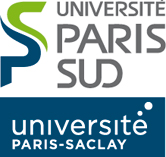Combinatorics

The main focus of this activity is the interrelation between algebraic structure and algorithms. We plan to work on the following subjects:
- Algebraic structures (Combinatorial Hopf Algebras, Operads, Monoids, ...) related to algorithms;
- Enumerative combinatorics and symbolic dynamic.
- Object oriented software design for modeling mathematics and development of SageMath;
More precisely, the research project takes place in effective algebraic combinatorics, at the interface of enumerative combinatorics and analysis of algorithms on one hand and symbolic and algebraic computation on the other hand. The objective is twofold: firstly, thanks to vast generalization of the notion of generating series, we hope to give a theoretical framework allowing to study the fine behavior of various algorithms. Reciprocally, the study of those very same algorithms gives a new mean to discover algebraic identities. Those identities have many applications in mathematics, in particular in representation theory but also in physics (mainly statistical physics).
The research relies deeply on computer experimentation and contains as a consequence an important software development part within the Sage-Combinat software project. However, the required level of sophistication, flexibility, and breath of computational tools is reaching a point where large scale collaborative development is critical. The design and collaborative development of such a software is raising research-grade computer science challenges around the modelling of mathematics, the management of large hierarchy of (object oriented) classes, etc.
Those very specific questions also raise more general combinatorial questions. We therefore plan to work on enumerative combinatorics and cellular automaton, in particular on trees. This activity is conducted with close collaborators in France, Germany, North America, and India.
Automates cellulaires surjectifs et mesures de probabilité
summary: Les automates cellulaires sont un modèle de calcul simple consistant en une coloration d'un graphe infini régulier (typiquement, une ligne infinie) sur lequel on itère une transformation locale uniforme. Ce modèle est capable de calcul universel dans un certain sens, y compris quand la configuration initiale est choisie ...
Descentes et inversions dans les permutations
summary: On peut identifier une permutation avec son ensemble d'inversions. Si deux ensembles d'inversions sont disjoints et que leur union est aussi un ensemble d'inversions, on obtient donc une nouvelle permutation. C'est un cas assez rare et intéressant et on démontre un résultat sur le nombre ...
Les méandres arcs-en-ciel sur des chemins de Dyck
Un méandre (de longueur n) est une paire de correspondences non-croisées sur {1,...,n}. On peut le représenter sur le plan réel comme un paire d'ensemble de demi-cercles, qui ne s'intersentent pas deux à deux, reliant n points sur une droite. Cette représentation géométrique permet d'introduire différentes ...
Translations: fr


